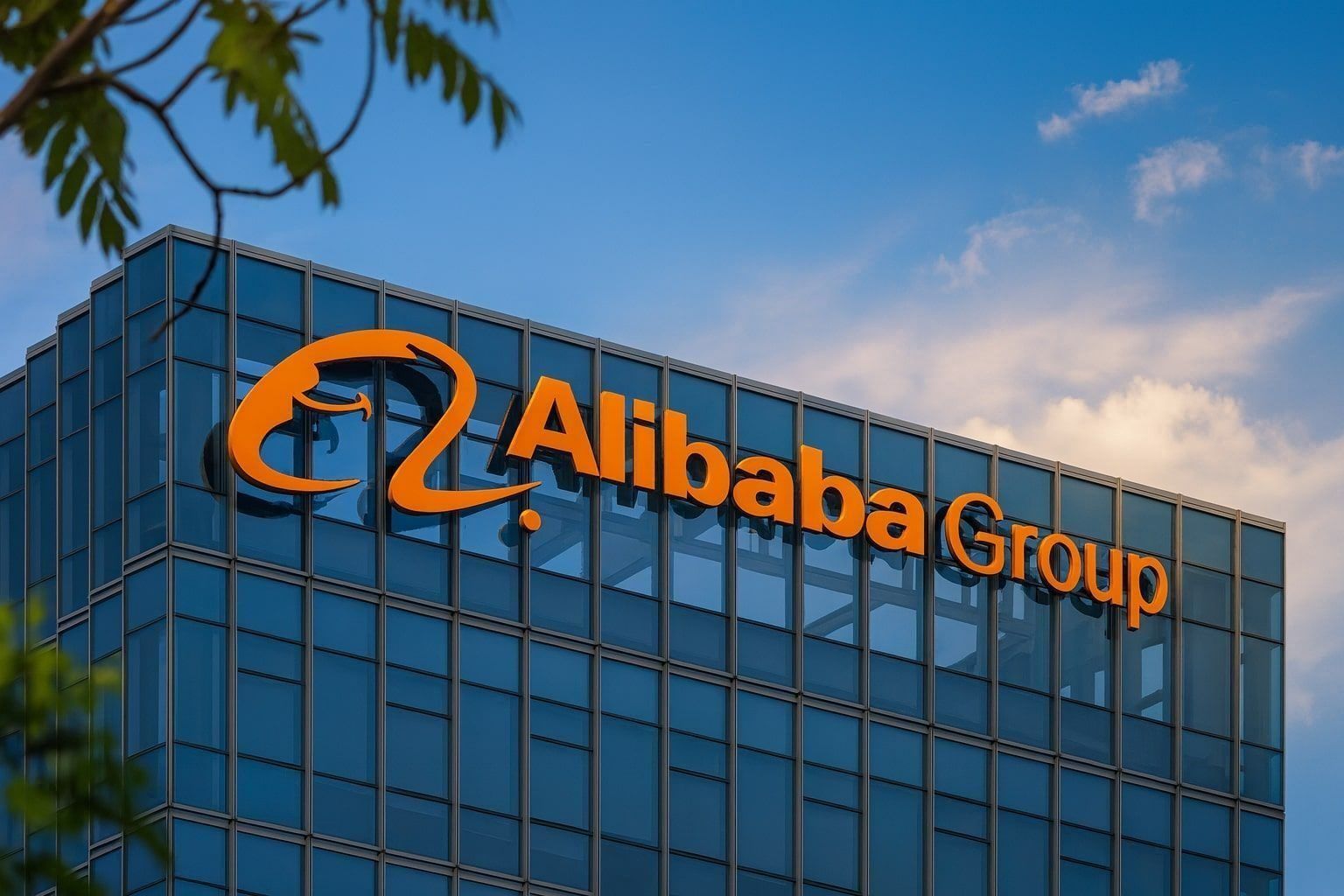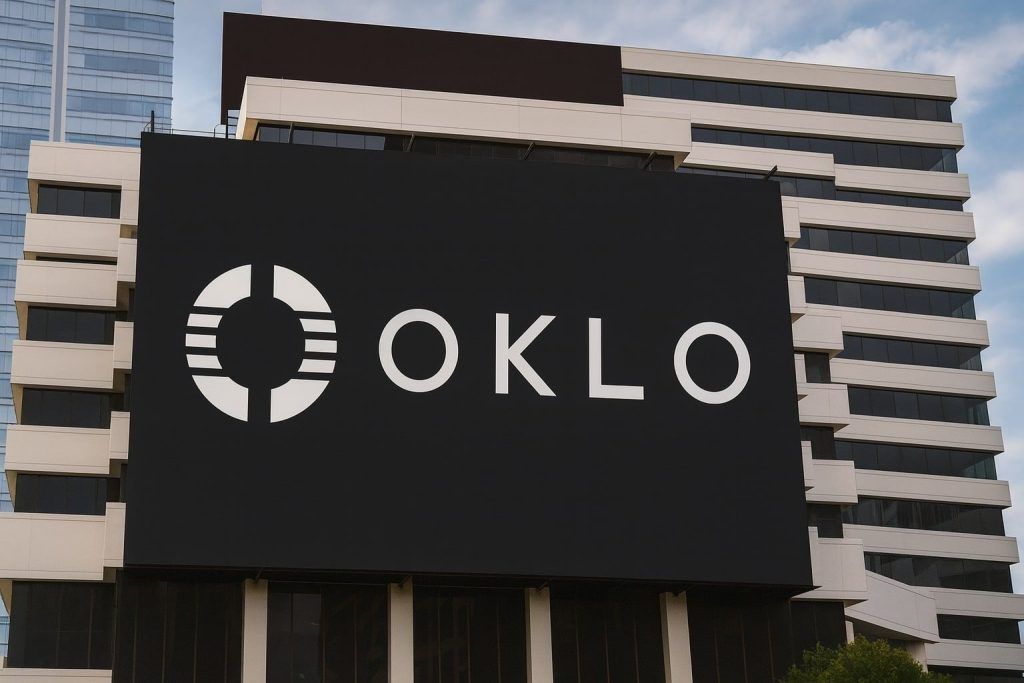Alibaba Group’s U.S.-listed shares head into the weekend just below $153, after a turbulent week dominated by national‑security headlines and fresh AI announcements, with investors now laser‑focused on next Tuesday’s earnings release.
Alibaba Group Holding Ltd. (NYSE: BABA) closed Friday at $152.93, down about 0.2% on the day, with after‑hours trading nudging the price slightly higher. At this level the company is valued at roughly $342 billion, trades in a 52‑week range of $80.06 to $192.67, and sits on a trailing P/E ratio of about 17.8x, based on earnings per share of $8.62. [1]
Despite the pullback from early October’s highs near $190, Alibaba shares have delivered an 80%+ total return over the past year, making them one of 2025’s standout large‑cap performers. [2]
With Q2 FY26 results due on November 25, 2025, and a swirl of geopolitical and regulatory noise in the background, today’s BABA price reflects both renewed optimism around AI and cloud — and lingering skepticism about China risk. [3]
Alibaba stock price snapshot: hot 2025, cooler November
From a technical standpoint, Alibaba is in consolidation mode:
- Last close: $152.93
- Day’s range (Friday): $148.64 – $155.88 [4]
- 52‑week range: $80.06 – $192.67, with the high set on October 2, 2025. [5]
- Market cap: about $341.7 billion
- Dividend: $1.05 per ADS (0.7% yield) after Alibaba introduced regular payouts, ex‑dividend on June 12, 2025. [6]
Even after recent volatility, BABA is still up roughly 80% year‑to‑date, and around 84% over the last 12 months, thanks to a sharp rerating from January lows near $80. [7]
Yet the stock also trades about 20–25% below its early‑October peak, reflecting profit‑taking and a more cautious tone ahead of earnings and amid new political noise from Washington. [8]
On valuation, multiple data providers place Alibaba’s trailing P/E around 17–18x, which is below many global internet peers and modestly under the broader consumer‑internet average in recent analyses of the sector. [9]
Wall Street, however, remains broadly constructive: consensus calls BABA a “Strong Buy” with an average 12‑month price target of $187.31, implying roughly 22% upside from Friday’s close. [10]
2025 reset: Leaner structure, cloud‑first strategy, AI everywhere
One reason Alibaba has re‑captured investor interest this year is that its story looks much clearer than it did during the regulatory crackdowns of 2021–2022.
Four new business pillars
In August, Alibaba unveiled a streamlined structure built around four main divisions:
- Alibaba China E‑commerce Group – Taobao, Tmall, Ele.me and related platforms.
- Alibaba International Digital Commerce Group – including AliExpress, Lazada, Trendyol and Daraz.
- Cloud Intelligence Group – Alibaba Cloud, DingTalk, Cainiao logistics and health‑tech assets such as Alibaba Health.
- A catch‑all category for “other” businesses. [11]
The move replaces the more complex “1+6+N” structure and is explicitly designed to focus capital and management attention on core e‑commerce and cloud/AI. [12]
Financially, the company already sees benefits: in the second quarter of 2025, Alibaba reported 5% year‑on‑year revenue growth and a 58% jump in net income to about $6.25 billion, driven by cloud and international commerce, even as promotions squeezed some margins in domestic retail. [13]
Massive AI and cloud investment
In February, Alibaba announced plans to invest more than $52 billion over the next three years in artificial intelligence and cloud infrastructure, one of the most aggressive spending plans in China’s tech sector. [14]
At the time, Jefferies flagged Alibaba Cloud as a “key player” that already outpaces many rivals on capex intensity, and U.S.-listed shares had gained nearly 90% over the previous 12 months, reflecting renewed confidence in the cloud and AI roadmap. [15]
This week, the company followed up with another headline: a major consumer AI push via a revamped Qwen chatbot app. The new free app, built on Alibaba’s latest large language model, is available in China on mobile and web, billed internally as a candidate for “best personal AI assistant,” with an international rollout planned. [16]
The launch marks a strategic shift away from a mostly enterprise‑focused AI strategy toward mainstream consumers, where Alibaba has lagged rivals like ByteDance and upstart DeepSeek in user numbers. [17]
Singles Day 2025: Alibaba still dominates China’s shopping super‑event
Singles Day (11.11) remains a crucial health check on Chinese e‑commerce demand — and on Alibaba’s competitive position.
Research from ECDB estimates that Singles Day 2025 gross merchandise volume (GMV) reached about 1.56 trillion RMB, up from 913 billion RMB in 2020, as the event morphs into a 27‑day campaign rather than a single shopping day. [18]
Crucially for shareholders:
- Alibaba accounts for around 55% of total Singles Day GMV,
- JD.com holds about 29%,
- and Pinduoduo approximately 6%, leaving only 10% for all other platforms. [19]
Live commerce now contributes about a quarter of overall Singles Day sales, underscoring why Alibaba has been pushing livestreaming tools and AI‑driven recommendations across Taobao and Tmall. [20]
For investors, the takeaway is that despite fierce competition from PDD, JD.com and short‑video platforms, Alibaba still commands a majority share of China’s biggest shopping festival, reinforcing the strength of its core commerce franchise.
Capital moves: buybacks, bonds and convertibles
Alibaba management has been active on capital allocation in 2025, trying to balance shareholder returns with huge technology investments.
Ongoing share repurchases
Under a repurchase authorization that runs through March 2027, Alibaba has continued to buy back stock this year:
- In the quarter ended June 30, 2025, it repurchased 56 million ordinary shares (7 million ADSs) for $805 million. [21]
- In the quarter ended September 30, 2025, it bought 17 million ordinary shares (around 2 million ADSs) for $241 million, resulting in a small net reduction in shares outstanding once employee equity awards are factored in. [22]
After these purchases, Alibaba still had $19.1 billion of buyback capacity remaining under the Board authorization as of September 30. [23]
Exchangeable bonds and convertible notes
Alibaba has also tapped credit markets to fund its infrastructure and expansion plans:
- In July, the company moved to raise about HK$12 billion (US$1.53 billion) via exchangeable bonds linked to its majority stake in Alibaba Health, with the proceeds earmarked for cloud infrastructure and global commerce investments. The zero‑coupon bonds can be exchanged into Alibaba Health shares at a later date. [24]
- Separately, in September the company completed an offering of roughly US$3.2 billion in zero‑coupon convertible senior notes due 2032, issued to certain non‑U.S. investors. [25]
Combined with buybacks, these moves show Alibaba trying to optimize its capital structure, although they also introduce potential future dilution if the convertibles and exchangeable notes are exercised.
New political overhang: White House memo and class‑action probes
Just as the market was getting comfortable with the “back to growth” narrative, Alibaba walked into a geopolitical storm.
White House memo allegations
On November 14, multiple outlets reported on a White House memo citing declassified intelligence that allegedly accuses Alibaba of providing technology and data that could support Chinese military operations targeting the United States. [26]
According to coverage of the memo, U.S. officials claim Alibaba gave the People’s Liberation Army access to customer data such as IP addresses, Wi‑Fi details and payment records, as well as certain AI‑related services. [27]
Alibaba has strongly denied the allegations, calling them “completely false” and suggesting they are politically motivated in the context of delicate U.S.–China trade talks. Chinese officials have similarly rejected the claims as distortions. [28]
The market reaction was swift: BABA shares fell about 3.8% on November 14, closing at $153.80, as investors tried to assess the risk of potential sanctions or restrictions. [29]
Investor lawsuits circling
In the wake of the memo, several investor‑rights law firms have announced investigations into possible securities fraud, probing whether Alibaba adequately disclosed national‑security and regulatory risks. One example is the Portnoy Law Firm, which said it may pursue a class action after the memo‑related sell‑off. [30]
These investigations are in their early stages and may or may not lead to formal litigation. Still, they add a fresh layer of headline risk just days before earnings, and they highlight the persistent geopolitical discount baked into many Chinese tech stocks.
Q2 FY26 earnings preview: what to watch on November 25
Alibaba will report unaudited results for the quarter ended September 30, 2025 (its fiscal Q2 2026) before the U.S. market open on Tuesday, November 25, followed by a conference call that evening in Hong Kong. [31]
Analysts expect a mixed set of numbers:
- Revenue: Consensus forecasts RMB 243.2 billion for the quarter, up modestly from RMB 236.5 billion a year earlier.
- Adjusted earnings: Street estimates call for RMB 5.78 per share, sharply lower than RMB 15.06 in the prior‑year quarter, which benefited from one‑off gains. [32]
Key themes from recent quarters that investors will be tracking:
- Cloud Intelligence Group
- Q1 FY26 cloud revenue grew 26% year‑on‑year, outpacing the broader business. [33]
- Investors want to see whether that momentum is holding up amid intense price competition in China’s AI and cloud markets.
- China e‑commerce and “instant commerce”
- Domestic e‑commerce revenue was up 10% in Q1 and remains the profit engine, but growth is sensitive to promotions, logistics costs and consumer sentiment. [34]
- Rebranding Ele.me riders under Taobao Instant Commerce and shifting to a broader “deliver anything fast” model is part of a renewed push to challenge Meituan and JD.com in ultrafast delivery. [35]
- International commerce
- International Digital Commerce revenue grew 19% in Q1, boosted by AliExpress, Lazada and Trendyol. [36]
- With Singles Day data showing that global awareness of 11.11 remains limited compared with China, investors will be watching for signs that Alibaba can convert its logistics and AI capabilities into sustained overseas growth. [37]
- Profitability and free cash flow
- Q1 FY26 showed only 2% overall revenue growth, but net income attributable to shareholders jumped 78%, helped by cost controls and investment income — a reminder that earnings can be more volatile than sales. [38]
Given how far the stock has run this year, anything short of a clear roadmap for AI monetization and margin resilience could trigger further profit‑taking.
Is Alibaba stock cheap or expensive now?
Whether BABA is “cheap” depends heavily on your view of Chinese risk.
On the numbers:
- P/E ~17.8x vs. an industry average near 19–20x, and well below some global peers that trade at 30–40x earnings, according to recent comparative analysis. [39]
- Price‑to‑sales (P/S) around 2.5x and a price‑to‑book around 2.4x, with a gross margin above 40%. [40]
- A modest dividend yield under 1%, with substantial buyback firepower still available. [41]
Some valuation services argue that the recent 85–90% surge in 2025 may already reflect much of the near‑term growth story, noting that BABA now trades above certain fair‑value models that factor in lingering regulatory and geopolitical risks. [42]
On the other hand, bulls point out that:
- Cloud and AI lines are growing far faster than the group average. [43]
- The company still dominates China’s e‑commerce landscape, as the Singles Day data underline. [44]
- Consensus targets imply low‑20s percentage upside over the next year if earnings track expectations and political headlines calm down. [45]
In short, Alibaba is no longer the deep‑value bargain it was at $80, but it also doesn’t trade like a frothy AI unicorn. Instead, it sits somewhere in the middle: a high‑quality platform company with improving fundamentals, priced at a discount that reflects China‑specific risk and fresh national‑security concerns.
Key things BABA investors should watch this week
For anyone following Alibaba stock around November 22–25, 2025, here are the main catalysts:
- Earnings details (Nov. 25)
- Revenue mix by segment, particularly Cloud Intelligence and International Digital Commerce.
- Any commentary on AI monetization, Qwen user traction and overseas rollout. [46]
- Management’s response to the White House memo
- Whether Alibaba provides additional disclosure or risk mitigation steps around data security and military‑civil fusion concerns. [47]
- Updates on capital allocation
- Pace of buybacks in the latest quarter and any changes to repurchase authorization or dividend policy. [48]
- Regulatory and diplomatic developments
- Any follow‑up actions from U.S. regulators or Congress, especially around potential restrictions on Chinese cloud and AI providers. [49]
- Guidance for 2026
- Commentary on consumer demand in China, competitive intensity with PDD and JD, and expectations for AI‑related capex under the $52 billion plan. [50]
Bottom line: Alibaba stock today
As of November 22, 2025, Alibaba stock sits at the crossroads of two powerful forces:
- A constructive fundamental story, built on dominant e‑commerce, fast‑growing cloud and AI businesses, and disciplined capital returns; and
- Heightened political and regulatory uncertainty, highlighted by the recent White House memo and emerging investor lawsuits.
For traders, that mix can mean sharp short‑term swings around next week’s earnings call. For long‑term investors, the question is whether the current high‑teens earnings multiple adequately compensates for both the upside from AI/cloud and the downside from geopolitical shocks.
Either way, BABA is likely to remain front‑page material for global markets in the week ahead.
This article is for informational purposes only and does not constitute investment, legal or tax advice. Always do your own research and consider your individual circumstances before buying or selling any security.
References
1. stockanalysis.com, 2. www.financecharts.com, 3. www.businesswire.com, 4. stockanalysis.com, 5. finance.yahoo.com, 6. stockanalysis.com, 7. www.investing.com, 8. www.macrotrends.net, 9. stockanalysis.com, 10. stockanalysis.com, 11. www.ainvest.com, 12. www.ainvest.com, 13. www.ainvest.com, 14. www.investopedia.com, 15. www.investopedia.com, 16. www.reuters.com, 17. www.reuters.com, 18. ecdb.com, 19. ecdb.com, 20. ecdb.com, 21. www.alibabagroup.com, 22. www.alibabagroup.com, 23. www.alibabagroup.com, 24. www.reuters.com, 25. www.businesswire.com, 26. www.reuters.com, 27. nypost.com, 28. www.arabnews.com, 29. www.globenewswire.com, 30. www.globenewswire.com, 31. www.businesswire.com, 32. news.alphastreet.com, 33. news.alphastreet.com, 34. news.alphastreet.com, 35. www.benzinga.com, 36. news.alphastreet.com, 37. ecdb.com, 38. news.alphastreet.com, 39. stockanalysis.com, 40. www.investing.com, 41. stockanalysis.com, 42. simplywall.st, 43. news.alphastreet.com, 44. ecdb.com, 45. stockanalysis.com, 46. news.alphastreet.com, 47. www.reuters.com, 48. www.alibabagroup.com, 49. ca.finance.yahoo.com, 50. www.investopedia.com







